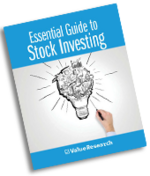
Value Research Stock Advisor has just released a new stock recommendation. You can click here to learn more about this premium service, and get immediate access to the live recommendations, plus new ones as soon as they are issued.
Mutual funds simplify the job of investing. But given that there are more than 2,000 fund schemes to choose from, the task of choosing the right funds can itself become overwhelming. Here are the four important decision points you will be confronted with and we will tell you how you can make the right choices with ease.
Debt fund or equity fund: First, you need to know if you want to invest in a debt fund or an equity fund. Both are meant to fulfil different needs. Debt funds offer steady but low returns. Given their low-risk/low-return profile, they are a suitable choice to meet short-term goals, where capital preservation assumes precedence over return potential.
On the other hand, equity mutual funds invest in shares, which can earn far-higher returns but can also fluctuate much more in the short term. They are suitable for time horizons of five years or more. The chances of incurring losses from equity investments fall drastically over longer investment horizons.
If you are a first-time investor looking to invest in equity, balanced funds could be a suitable option for you. These funds invest around 65 per cent of your money in equity and the rest in debt. With this combination, you get a controlled exposure to equity investing. The debt portion brings stability to your returns.
Direct plan or regular plan: Every mutual fund now offers a direct plan and a regular plan. If you buy a fund from a distributor, that's a regular plan. And if you buy it directly from the fund house, without any intermediaries involved, that's a direct plan.
The two are the same as far as their underlying portfolios are concerned. They differ with respect to their expenses. Since a direct plan does not involve distributor fee or commission, it has lower annual expenses. Whilst a direct plan will save you money (and thus give you better returns), you'll have to do everything yourself. Being a do-it-yourself investor requires active tracking of your portfolio, rebalancing, switching funds, etc., which can be daunting for a beginner. Hence, you may want to go through a distributor initially and invest in regular plans. Later on, once you gain more knowledge and become more confident about investing, you can think of switching to direct plans.
Growth option or dividend option: Funds come with growth and dividend options. While the dividend option provides regular dividends, the growth option doesn't have any such payouts.
Fund dividends are nothing but a portion of your invested money returned to you periodically. After dividend payment, the fund's NAV adjusts downwards. If you don't have a specific requirement to get part of your money returned to you, it is best to go for the growth option. This will ensure that your fund's returns make the most of compounding. Also, the dividends received may be reinvested at lower rates or may get spent.
Closed-end vs open-end funds
An open-end fund is available for sale and purchase on a continuous basis. Such a fund does not have a fixed maturity period. Investors can conveniently buy and sell the units of an open-end fund at the net asset value (NAV), which is declared on a daily basis.
A closed-end fund is open for subscription only during a specified period after the new fund offer (NFO). Normally, one cannot redeem one's units until the maturity of a closed-end fund. However, to provide a platform for investors to exit before the end of the term, fund houses list their closed-end schemes on a stock exchange. But the trading volumes are usually very low in these funds, making it difficult for investors to exit through this route. Even if a buyer is available, the fund tends to trade at a discount to its NAV.
If you have read till here, congratulations! Now, take your knowledge one step further by learning about the different categories of debt funds and equity funds. You have to understand which fund suits you best in terms of returns, risks, volatility and performance. Once you are clear on that front, you can make your first purchase.









